Dom Testa's Blog, page 4
May 16, 2021
Review: Project Hail Mary

Andy Weir hit the jackpot with his first self-published novel, The Martian. It eventually got picked up and distributed to a mainstream audience, and he sold the rights for a movie version starring Matt Damon.
That meant the pressure was on with Weir’s follow-up, and it didn’t fair nearly as well. Sophomore slump, I guess.
But that must’ve really lit a fire under the guy. His third effort, titled Project Hail Mary, is out now and it’s dynamite. It’s easily one of my favorite books of the past few years.
The story has much in common with Weir’s first smash hit: It’s about a man alone in space (or is he?), having to solve complex science problems in order to succeed. But in The Martian, Mark Watney’s version of success was keeping himself alive long enough to be rescued; in Project Hail Mary, success for Ryland Grace will mean saving the entire human race.
And yes, there is a LOT of science in this science fiction. Some people dig that, some don’t. But one of Weir’s remarkable talents is taking hard science and making it not only understandable, but really interesting. And the guy does a shitload of research, but as the son of a particle physicist, should we be surprised?
Any review of this book could be rife with spoilers, which I most certainly do not want to do. What I can tell you is that Weir has found the winning formula for blending science, humor, and thrilling drama into a story that is captivating.
If I was hard-pressed to find any fault with the book, I’d maybe say there were just a few too many hair-raising, skin-of-his-teeth disasters for our hero, Grace, to overcome. But that’s almost nit-picking. It’s a fast, enjoyable read.
Although let me throw in one other point. I didn’t read the book, but rather listened to the audio version. And I have to say, I’m convinced it’s the best way to absorb this story. Maybe not with all books, but there are elements of Project Hail Mary that are tailor-made for audio. You’ll understand that better when you listen. Again, no spoilers.
Here’s a link to the audio version.
Here’s a link to the ebook version, and this is print.
Full disclosure: Those are affiliate links. You won’t pay a penny more than you otherwise would, but your humble correspondent will make a couple of pennies to help pay for my site.
Enjoy!
January 25, 2021
The Unread Books
In 1981 I joined a mail-order book club. It was the kind where you had to order five or six books a year at the list price. To entice you to cough up the money, they sent half-a-dozen free titles—of their choosing.
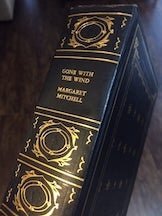
Forty years later I can’t recall what the other freebies were, but for sure I remember one of them:
Gone With The Wind, by Margaret Mitchell.
It’s still sitting on one of my book shelves. And I still haven’t read it.
This morning I sat down and figured out how many times I’ve moved to a new address in those forty years. The answer is twelve.
Twelve times I’ve boxed that thing up and hauled it to a new home. The thing isn’t dainty, either; it’s a thick, heavy hardback, about 740 pages.
To me this epitomizes our sometimes-irrational love affair with books. Some of us collect them regardless of whether we’ve read them or not. I know damned well that Mitchell’s epic novel of the Civil War is a beloved classic, so I’m fine having it take up shelf real estate.
How many others have I carted around that are unread? Of the hundreds of titles, I’d guesstimate about 10%. That includes books that were gifts (in other words, picked out by someone else), and Ulysses, by James Joyce.
I mean, c’mon—I’m not a masochist.
Yet whether they’ve been read or not, there are two arguments I see for keeping every one of them: They’re essentially artwork, and someday I might crack them open.
In the meantime, they’ll continue to be my companions. Unless I’m lugging them around in boxes, they still bring me joy.
And who knows? One day I might whittle the number down to 5%.
January 11, 2021
And now, a word about F-bombs

I just read another social media thread where authors debated the use (in this case, the overuse) of F-bombs in fiction.
Many chimed in to say it was not only acceptable, but they enjoyed sprinkling the word throughout their manuscripts. The majority, however, said it works a few times, but not in heavy doses.
As you might imagine, I have thoughts on this topic.
First, a disclaimer: I generally have a potty mouth. People occasionally ask me how I don’t slip when I’m doing the radio show, and the answer is I don’t know. I think the show accesses a different portion of my brain.
When I see authors—especially new, hungry authors—injecting a sizable dose of graphic language into their stories, my first thought is that they somehow deem it to be “edgy.” And as we all know, if you’re not edgy you’re not cool.
The problem is that most of us were no longer dazzled by that word by the time we reached middle school. Yeah, when Kenny Smith said it in the 4th grade we were stunned, and we watched everyone else to learn how we should react.
But when everyone used it every five minutes in the 9th grade, the shock factor evaporated. Sure, some people still giggle when they say it, but I won’t be surprised if network television okays it in the next few years during late nights, simply because it’s so common.
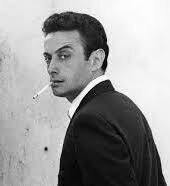
I mean, back in the late 1950s you couldn’t say pregnant on TV, and in the 60s Lenny Bruce made people gape in utter disbelief with his colorful language.
(Personally, I wish people had listened to what he was saying instead of how he said it.)
Today, Lenny Bruce’s language would go completely unnoticed. His content might still resonate, but the F-bombs? The majority of comics today drop at least one per paragraph.
My point? If you’d like to be a writer, I encourage you to use all of the colors on the word palette. You should strive to make each one fit the moment perfectly. And yeah, there may be the need for a well-placed curse or three in your manuscript.
(When I wrote my non-fiction book about the writing process, called The Color of Your Dreams, so-called foul language was peppered here and there, but only where I felt it worked. And, as expected, some people took exception.)
But if you’re dropping two dozen F-bombs per chapter in order to seem edgy or cool or “in touch”—whatever that means—I think you’re putting the emphasis on the wrong thing. It should be focused squarely on the story and the characters.
A common cop-out is to proclaim, “But that is my character!” Yeah, okay. Then I hope your character has something else to lean upon besides a proclivity for raunchy language. It’s, um, been done. Dressing up a poor story by concentrating on F-bombs and other assorted gems from the naughty pile is a crutch.
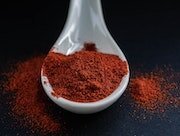
Photo courtesy of Victoria Zakharchuk on Unsplash
A word like that is a spice; it works where it works. But dump in a whole jar of the stuff and you’re suddenly an amateur chef.
June 1, 2020
Riots and Astronauts

This weekend America showed the world two sides of herself. Both received mountains of press and social media coverage, both will have lasting effects.
When you take a step back and compare, however, the contrast between them is startling.
While cities across the nation boiled over in protest, with swarms of people expressing anger (sometimes peacefully, sometimes not), another group of citizens united to achieve something remarkable.
Exhibit A was the collective cry over the senseless death of a man, a crime that left many of us wondering how, in 2020, we can still feel such a wide gulf between people over something as shallow as skin color.
Exhibit B was the successful launching of two men into space by a team representing an incredible cross-section of our people.
When two astronauts took off on Saturday afternoon, it was thanks to many thousands of women and men from multiple ethnicities and generations.

Online coverage was extensive, showing people of various races shoulder to shoulder, sharing a moment of exuberance at what they’d accomplished together.
They worked as one, they overcame enormous challenges as one, and they celebrated as one. For those people, in that moment and in that setting, nobody was Black, nobody was White, nobody was Asian, Indian, or Latino. They were a team of human beings, pulling together for something historic.
And achieving it.
Sure, over the years there’s been progress in the way we treat each other, but this weekend’s demonstrations and riots showed that we haven't sufficiently evolved. It’s enough to make most of us shake our heads in dismay.
And yet, in the midst of heartbreaking destruction and hate, for a few hours another group of Americans set a shining example for the rest of us. They looked up from the petty differences that could’ve separated them, and instead looked together to the stars.
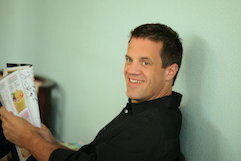
Dom Testa is a broadcaster and author.
His series of spy thrillers,
the Eric Swan series
, is available in print, ebook, and audiobook at your favorite retailer.
Riot image courtesy of Randy Colas on Unsplash
May 23, 2020
The Goldilocks Choice

A famous rock star, through a haze of cigarette smoke and a table covered with empty bottles, once claimed that a 32-track audio recording was ridiculous.
Why? Because, he said, while a producer might love the power of orchestrating so many inputs and manipulating the wide spectrum of sound, the average person can’t distinguish more than eight tracks.
His casual observation holds a simpler truth: We think we want a lot of choices in our life, but deep down that’s bull. It only creates noise and anxiety.
Crayons
It starts early in life, too. We plead for the 64-count box of crayons, certain we need all of them, but then wind up using our favorite six. Desert Sand and Magic Mint come out maybe once or twice, certainly never enough to require the built-in sharpener in the back.
It accelerates from there, until one day you’re standing in the cereal aisle, dumbfounded, trying to differentiate between a dozen distinct varieties of Special K. Can they all be Special?
Ever been in the mood for a movie on the couch and then fallen into a scrolling coma, unable to decide from the billions rolling past your eyes?
Choice in reasonable doses is good, and I doubt anyone would voluntarily ask for fewer options. We’re brainwashed to believe that the pallet with hundreds of choices is a gift from the gods, like they’re doing us a big favor.
But we all know more is rarely better. Fifty shades of crap is still crap, no matter how they alter the packaging.
Business owners have bought into a misguided belief that a dazzling display of options makes them look like they care about us. That’s backwards; you’re making us work too hard.
It’s easy to choose between two or three things and feel confident in your selection. But when there are twenty, you’ll never believe your choice is based on anything logical or concrete; it simply becomes a random selection so you can just be done with it.
Paralyzing
There’s also the classic issue of analysis paralysis. The process of choosing becomes so overwhelming that you make no decision at all. I mean, have you seen the menu at The Cheesecake Factory?

It actually goes against our brain’s natural capacity for problem solving. A restaurant consultant once wrote that seven items per category was the maximum for ordering efficiency. Any more than that and the customer merely freaks out and orders the same thing she always does.
A popular dive bar in Sedalia, Colorado, understands this. Their menu has a total of four items: Hamburger, Double-Meat Hamburger, Cheeseburger, Double-Meat Cheeseburger.
That’s all you get. Pick one and sit down.
And the place is always packed.
I’m not saying its popularity is entirely based on the stress-free menu, but it probably doesn’t hurt.
Goldilocks
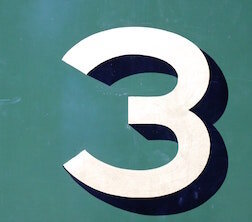
What we secretly long for, I think, is the Goldilocks solution: Please let us choose between only three. We can easily handle three.
In fact, here’s a little trick a few companies have learned: Give the consumer three size options and that consumer will pick medium. Almost every flippin’ time. They eliminate any possibility of you ordering a small by offering a medium and a large, thereby increasing their profits.
The medium is the Goldilocks, and it makes most of us really, really happy.
So, no, 32 tracks aren’t necessary to make good music. Many of the all-time classics were recorded with two or four tracks, total.
We don’t need, nor really want, 25 different kinds of Oreos, and three soup choices on the menu are plenty. Honestly, we’d probably be satisfied with two, as long as one of them is minestrone or tomato bisque.
And, ultimately, with almost any decision we’re happier to just flip a coin. Nobody was ever paralyzed having to choose between heads and tails.
We call it, we watch the result, and we get on with our life.
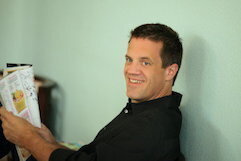
Dom Testa is a broadcaster and author.
His series of spy thrillers,
the Eric Swan series
, is available in print, ebook, and audiobook at your favorite retailer.
Recording studio photo courtesy of Jiroe on Unsplash
Perplexed pic courtesy of Nathan Dumlao on Unsplash
Three image courtesy of Tony Hand on Unsplash
May 11, 2020
Let It Be Good

On a vacation to New England my wife and I discovered a bar that truly kicked ass. It was on gently-sloping property behind a restaurant, a rectangular outdoor bar overlooking a small river. Towering shade trees provided respite from the sun. The drinks were moderately priced, the service impeccable.
For what it’s worth, the bar was ergonomically perfect, too. Just the right depth to the tabletop (not too skinny, not too wide), at a comfortable height, and with foot rests positioned just where they need to be.
You may, or may not, understand exactly how all of that matters. We happen to be "eat at the bar" people. It matters.
We spent more than two hours there, enjoying appetizers and cocktails, and getting to know some of the locals. When we left we said, This was so cool. Let’s come back tomorrow night.
We did. And it was utterly disappointing.
The food wasn’t as good, the new bartender was snobby, and the overall atmosphere was flat. We paid the tab and left after forty minutes. Walking back to the car, both of us quiet, we absorbed the let-down.
I finally uttered the words that summed up the two extreme experiences: Why didn’t we just let it be good?
How many times do we take something that’s good and try to unnaturally force it to either replicate itself or to somehow be even better? We should just let it be good.
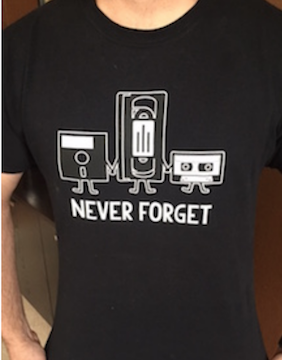
Not long ago I posted a photo on social media, a shot of my son’s T-shirt. It featured a computer floppy disk, a VHS tape, and a cassette, all holding hands. The caption read, Never Forget.
Okay, that’s just funny. It’s succinct, silly, and sentimental. I had to post it, to share the humor.
And then came the comments, including:
Why doesn’t it have a vinyl album?
What about an 8-track tape? I don’t see an 8-track.
Hey, why no CDs? Those are old-fashioned now too, you know.
Sigh. I wanted to respond to each of these: Let it be good. Just let it be good.
Not everything has to be one-upped. Or, like my visit to the pleasant outdoor bar, not everything has to be duplicated. Sometimes we should just enjoy every ounce of an experience, let it be the good experience it was meant to be, and then move on.
Yeah, our world allows comments today (on almost everything), but we seem to think it demands comments. Or refinements. Or flat-out improvements. It doesn’t.
We take too much of the good that we get and feel some ridiculous need to embellish it. But why? Sure, sometimes it’s good fun to keep a joke rolling, but I submit that it may often be better to just absorb it and all its goddamned goodness.
For creative people, this is something of a curse, because we tend to never be satisfied with our creations. Paintings, stories, craftwork, or any other artistic endeavor - we overlook something simple and good, and long to make it spectacular.
But simple and good often are spectacular, really. Sometimes much more so because of the simplicity.
Are you able to patiently see the goodness? Can you learn to appreciate it?
There are only so many antiquated pieces of technology that could’ve made that T-shirt perfect, and the number was three. Any more and it’s cluttered and suffocated.
Our lives are like the shirt. On a daily basis we’re gifted good experiences, some big, some small. The next time you’re blessed, find the point of perfect satiation and walk away.
Let it be good.

Dom Testa is a broadcaster and author.
His series of spy thrillers,
the Eric Swan series
, is available in print, ebook, and audiobook at your favorite retailer.
New England pic courtesy of
Corwin Thiessen
on
Unsplash
May 9, 2020
Bob Dylan Doesn't Suck
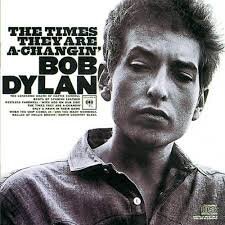
Bob Dylan ain’t my thing. I don’t enjoy the music or the lyrics, his unique vocal style is difficult for me to listen to, and the haggard-artist look—on anyone—always struck me as contrived.
When he’s lauded by many as one of America’s greatest poets, performers, and visionaries, I shrug. To put it simply, I don’t get the adulation.
Notice I didn’t say, “Bob Dylan sucks.”
In life there are things we all agree should be labeled as sucky. Cancer sucks. Deadly hurricanes and tornadoes suck. Assholes who create and propagate computer viruses suck.
But lumping your personal taste, especially anything in the arts, into the realm of suckiness is just arrogance. Loudly proclaiming “Mashed potatoes suck!” is not only crazy talk—for mashed potatoes are like manna from heaven—but it arrogantly elevates your opinion over that of anyone or everyone else.
Here’s the thing: I used to be that guy.
Back in the day, if asked, I would tell people, “Bob Dylan sucks.” I’d proclaim the shittiness of The Beach Boys and Brussel sprouts, too.
Until the day I finally grew up and realized the difference between “The Goonies sucked” and “That movie’s not for me.”
And, surprisingly, it became freeing. It took me a while to figure out why, but here’s the best way I can explain it.

When you tell a worshipful fan of Will Ferrell that his movies suck, it practically invites argument and/or outrage. Or a punch in the face.
Why? Because you didn’t insult Will Ferrel; you insulted them. You may as well have said, “Your taste is for shit. What’s wrong with you? God, you’re stupid.”
When you tell that same fan, “Yeah, it’s just not my thing,” then you’re practically inviting sympathy rather than anger. Now it’s not that they’re stupid, but that you’re evidently not wired properly. There’s something wrong with you, rather than with them.
And people are okay with that. Believe me, they’re totally okay with that.
The beauty is that both examples say exactly the same thing: You like this, and I don’t. One way makes the other person seem to be a faulty human, while the latter makes you the defective part.
Saves a lot of time, and saves a lot of senseless arguing—because you’ll never, ever convince me that Brussel sprouts should even exist on this planet.
Nobody gets mad, we all get on with our lives, and Bob Dylan gets on with his mumbling.
April 26, 2020
Re-reading a Book
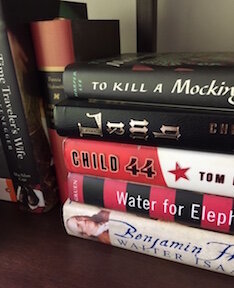
I rarely read a book I’ve already read. In fact, of the nearly 1,500 books I’ve consumed through the years I’ll bet fewer than 20 ever got a second pass.
And there are a couple of funny things about that fact.
For one, many of the books on the big list were fantastic, certainly worthy of a second, a third, or maybe even a fourth trip through.
Let’s face it, few of us think twice about re-watching movies we love. There’s one film in particular that I know I’ve watched at least two dozen times in my life, at least once every couple years.
What’s Different?
So what’s different about books? If you turned on The Princess Bride (the movie) right now I’d gladly sit down and laugh through it again, even though I practically have it memorized.
And yet the book, which I also adored, I’ve read once.
Sure, there’s the time element. A movie lasts around two hours, while it takes the average American about five-to-six hours to read an average-length novel.
But if, as most of us agree, the book is almost always better, then why wouldn’t I make the commitment to explore some of these great volumes again?
Perhaps it’s simply because of that time factor, but for the opposite reason. Since it is more of a commitment, maybe I subconsciously want to use that time to absorb something new.
But that leads me into the second funny thing about my reluctance to re-read:
I don’t remember squat about books.
Are you that way? Probably not. Chances are you remember way more than I do.
There’s something screwy about the RAM in my head, I think. I can tell you whether or not I’ve read a book—I remember the titles, for sure, and whether or not I enjoyed them—but within a month of reading one my memory banks are wiped.
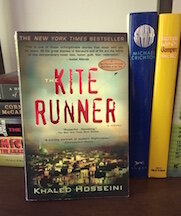
I was talking with my wife about The Kite Runner. I read it as soon as it came out in 2003, and I recall loving it. Even recommended it to people and featured it in my book club.
Today? I couldn’t tell you anything about the plot, the characters, or how it ends. Nothing. When pressed, I guessed that it took place in either Pakistan, Afghanistan, or India—but couldn’t be sure which.
Sure, with some books I recall many details. The ending of To Kill a Mockingbird, for instance, would not be a surprise. But the majority of books? Practically nothing.
And that’s the funny thing, then. If I did choose to re-read a book, it would be like a whole new experience for me. And, going into it knowing that I loved it the first time, I could be guaranteed of a good experience.
An Art Collection
Look, I’m aware that some people—maybe you—read their favorites over and over again. I know someone who reads the same book at least twice a year, and has done so for 20 years.
I’m the weirdo who doesn’t. I have a home library crammed almost exclusively with one-time wonders, books I loved but then were banished to the shelves. They’re now like an art collection I just glance at as I walk by.
So why do some people read their favorites over and over? Is it simply a comfort zone?
Is it the joy of discovering something new you hadn’t picked out during the first, fourth, or fourteenth read?
Is it because certain books, even fiction, are just so inspirational that you must revisit the lesson to get re-energized? I could understand that.
Is it fear that new stuff won’t—or can’t—stand up to your favorites? (I can’t get on board with that, by the way. There are just too many great books written every year.)
Perhaps one of these reasons, however, could prompt me to try it. To maybe go back to the bookshelf and pull down an old favorite, a book that’s moved with me from house to house but only been appreciated once.
Maybe every third book could be a re-tread.
I think I’ll do it. And maybe I’ll start with a virtual visit to Afghanistan with that Kite Runner.
Yeah, I cheated just now and looked it up.
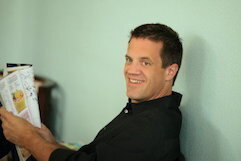
Dom Testa is a broadcaster and author.
His series of spy thrillers,
the Eric Swan series
, is available in print, ebook, and audiobook at your favorite retailer.
Here are some of the books mentioned or pictured in this piece. Disclaimer: These are affiliate links, which means with any purchase I’ll make a few cents. Doesn’t cost you a penny more, but those cents help to support this blog. (Plus, I think you’ll really like them.) So thank you!
PS: If you don’t see the links below, just refresh and they’ll probably pop up.
April 21, 2020
The Best Bad Review
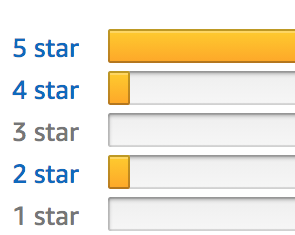
How funny that the common stereotype of an artistic person is that of a quiet, sensitive soul.
In reality, an artist better be a tough, thick-skinned warrior to persevere in a world where reviews are brandished with razor-sharp tongues and venom-infused keyboards.
To be an artist, whether it be music, painting, or writing, means putting your creative talents into the crosshairs and waiting to be eviscerated. It’s not a matter of IF you’ll be gutted by someone, but how often.
The reasons for why people write vicious reviews is another article for another time. Today, however, I want to let artists know that sometimes a bad review is a good thing, disguised.
When you publish a book you know you’ll get some wonderful 5-star reviews, a smattering of 3s and 4s, and the obligatory 1-star humble pie.
The DangerReviews can be dangerous, too, subconsciously pushing you off your path. One review, from someone who will never be a fan of your work no matter what you do, might influence you to pivot in some odd direction that ultimately destroys the relationship you’ve established with those who do enjoy your work.
If you must glance at them, however, the key is to look past the stars and analyze the words. There are essentially three take-aways you can derive from this approach.
One, the review offers reasonable, intelligent feedback. I’m not saying this is common, but it does happen. Some reviewers provide solid intel that might truly improve your next piece.
(Side note: I find a lot of these reviews lurking in the 3- and 4-star pools. They’re not gushing, nor trashing; they’re offering astute insight.)
Two, within one or two sentences they reveal their ignorance. Any star rating they dole out is worthless since they don’t know what they’re talking about. They’re simply addicted to the power of leaving a review, especially the bad ones. It’s intoxicating to some.
And three—the most important one of all—is the review that validates what you’re trying to accomplish with your creative effort.
I recently received a two-star review for one of my thriller novels. Normally that would be disheartening, even though the overall rating for the book is solid and positive.

But, remember, it’s the words of the review, and in this case I almost cheered.
The reviewer was mostly put off by the snarky attitude of the book’s protagonist, the spy named Eric Swan:
“. . . the plot was interesting and had potential, but the author is so consumed with constant witty banter and ‘smart’ snarky retorts.”
Yes! Precisely!
The entire marketing of the Swan series plays up the fact that this is not Jack Reacher, Mitch Rapp, nor Jason Bourne. Those are fantastic characters in terrific thrillers, created by incredible writers.
But I wanted something different. I wanted a smart-alecky, snarky spy who wasn’t dark and serious. I wanted action with some laughs. Christ, one of the tag-lines of the series comes from an early review, which called Swan “a modern mashup of James Bond and Fletch.”
So, right up front, the marketing says “This character is witty and snarky.”
And the 2-star review said, “consumed with witty banter and ‘smart’ snarky retorts.”
In other words, they just confirmed, with an unflattering review, that my book delivered EXACTLY what I’d promised: A snarky alternative to all the other spies out there.
The LessonIt’s a lesson for every aspiring writer. Yes, you’ll get some good reviews and some bad. You may cringe—I mean, people are essentially slicing and dicing your spirit—but you can’t let them ever derail you from your mission.
And, as you now see, some of the ‘bad’ reviews are actually terrific. Without meaning to, they could validate everything you wanted to do in the first place. Is your book for them? No, and that’s okay.
Look, there’s not a book in history without its share of thumbs down. To Kill a Mockingbird has nearly one thousand 1-star reviews. Think about that.
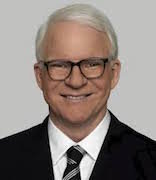
Actor, comedian, and writer Steve Martin (a terrific writer, by the way) was told early on, “You’re never gonna make it.”
His attitude about that pronouncement? He said, quote, “Now I’ve got my badge of honor. Part of the job is to get a terrible review from someone who doesn’t understand you.”
So well said. What one person dislikes in your work is often the secret sauce you’re using to attract other buyers. Those who ‘understand you.’
So chin up, my sensitive, artistic friend. A bad review is sometimes the best thing you can get. Go forth with thick skin and create!
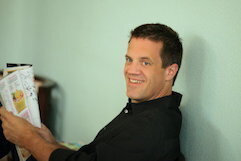
Dom Testa is a broadcaster and author.
His series of spy thrillers,
the Eric Swan series
, is available in print, ebook, and audiobook at your favorite retailer.
Here are some of the books mentioned in this piece. Disclaimer: These are affiliate links, which means with any purchase I’ll make a few cents. Doesn’t cost you a penny more, but those cents help to support this blog. (Plus, I think you’ll really like them.) So thank you!
PS: If you don’t see the links below, just refresh and they’ll probably pop up.
April 15, 2020
The Humanity of the Thriller
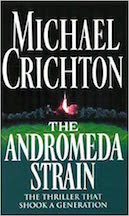
It was in the library at Jefferson Junior High School that I made the transition from reading "kids' books" to adult fiction. The Hardy Boys, after years of prepping me, were left behind as a new world of words opened before my eyes.
I strolled the library aisles and came across The Andromeda Strain, one of the earliest novels from soon-to-be-superstar Michael Crichton.
That book introduced me to the thriller genre, and soon I was devouring all the mysteries and thrillers I could find.
But it wasn't until a few years later, when Robert Ludlum released his masterpiece, that I discovered the true power behind the thriller. I finally understood that it wasn't the action - although we do enjoy that - driving our page-turning obsession.
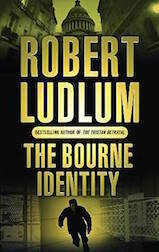
It was the lead character. Specifically, their humanity, or at least their tenuous grasp on it.
Jason Bourne was the character who brought this magic of writing to my attention. Until then I'd never quite comprehended the link a good writer creates between his protagonist and the reader. I'd assumed it was a good plot, solid pacing, and snappy dialogue.
Suddenly I was interested in the people at the heart of the story.
Not yet 20 years old, I devoured The Bourne Identity, then had to wait until I turned 25 for the follow-up.
The suspense and action in the first book might've been enough to interest me in the sequel, but my curiosity about the character sealed the deal.
When I began writing my own novels, it was a lesson I embraced. Because that's where the real power lies in the genre.
Thriller characters, if written properly, connect with readers on emotional levels. They may be sympathetic figures, or they may be enigmatic.
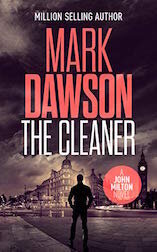
Do you curse them, or are you perplexed by them? Do you find yourself silently - or sometimes aloud, I guess - coaxing them to do, or to not do, something?
It really comes down to this: Do you root for the protagonist of the book?
In Mark Dawson’s excellent John Milton series, you watch a protagonist who’s been wronged - more than once - battle back, constantly coming to grips with who he is, not who others think he is.
This is one of the least understood magnets of a good thriller: The draw of the protagonist through their humanity.
Sure, the package is wrapped in a shell of action and adventure, which helps to build appeal. But it's the depth of the lead character's personality pulling us through chapter after chapter. And, in the case of a series, from book to book.
Some novels in the genre are well suited to be stand-alone books. The story is clever, the action non-stop, and the payoff satisfying.
It takes something special, however, another potent ingredient, to build lasting interest throughout multiple books in a series. The ongoing story must have a character interesting enough—and with enough of a reason for continuing his or her saga—to capture our loyalty.
In science fiction and fantasy they talk about world building, and how vital it is to crafting a winning series.
For the best thrillers, it's character building. An author has to imbue their hero with either a flaw to be managed, or a pain point that desperately needs attention and repair.
Some writing coaches have famously insisted that characters must grow throughout a book or series. I'm not convinced that's always true.
There are times I’m just as captivated watching a character come apart through the course of a series thread, deconstructing themselves in order to find answers.
Is that a fancy way of saying they grow? Perhaps it's mincing words.
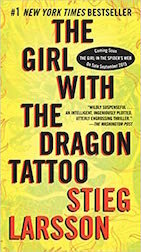
I know that Stieg Larsson's series was riveting for one primary reason: We couldn't get enough of Lisbeth, she of the dragon tattoo and the ultra-complex, often destructive, personality.
Are we searching for elements of ourselves in these lead characters? Are we constantly comparing their choices with those we would've made in their place? I think both of those answers are a resounding yes.
It wasn't until I was nearly finished writing the first Eric Swan novel that I realized how vital the question of his humanity was to the series. It led me to go back and not only alter some of the plot, but to introduce an entirely new character who becomes Swan's sounding board.
And, truth be told, the depths to which I can dive within that device are what keep me most interested when writing the books. Oh, the action is fun, and Swan's smart-ass attitude is clearly my own voice.
But how much longer will he be able to hold on to his soul, the part of him that he fears is slowly being corrupted?
I can only trust that this same question is what drives many readers to come along for the ride.
Think about your favorite books, especially those in the thriller genre. What was it about the lead character(s) that intrigued you the most? How much of yourself did you see in them? How much faith did you invest in them?
And how much did you root for them, even when they may have let you down?
This is the true cornerstone of thriller excellence.
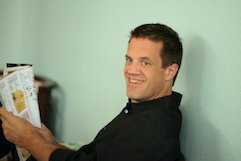
Dom Testa is a broadcaster and author.
His series of spy thrillers,
the Eric Swan series
, is available in print, ebook, and audiobook at your favorite retailer.
Here are the books mentioned in this piece. Disclaimer: These are affiliate links, which means with any purchase I’ll make a few cents. Doesn’t cost you a penny more, but those cents help to support this blog. (Plus, I think you’ll really like them.) So thank you!



